
13 Best Places to Learn Spanish Abroad in 2022
Have you ever dreamed about jumping on a plane to visit Latin America or Spain? Whether it’s for fun, for school, or for feeding your adventurous spirit, you’ve got big plans to live abroad and learn Spanish. Not all places to learn Spanish are created equal—you’ll want to find the perfect place that suits your preferences.
From RAE’s home Madrid (where the locals’ accent is “classical” Spanish) to the lakes and volcanoes in Central America, and all the way down to South America—where the accent can be completely unique—we cover the 15 best places to learn Spanish abroad!
1. Madrid, Spain
Population: 6.6 million
Madrid is where it all began—the capital of the country that spread Spanish all throughout Latin America. If you’re a language purist, Madrid is the best of all places to learn Spanish (even the RAE’s headquarters is in the city!).
As the capital, it has access to all of Spain’s major cities and pretty much every other city in the world. It’s also one of the cheapest cities in Europe. According to Culture Trip, you can ride the bus for 1.7USD (1.50 euros) all day and get to know the whole city.

An important recommendation is to keep an eye out for pickpockets—in spite of not being a violent city, Madrid does have people who might take advantage of big crowds.
The Spanish accent in Madrid is a bit heavy, and highly different from Latin American Spanish. Madrid natives pronounce the “s” like the “sh,” and the “c” and “z” have a similar sound to the “th” in English.
Read more: Is It a Spanish Lisp? All About the Ceceo
Spaniards have a colorful collection of idioms and, rather than using the simple past, they often use the present perfect. For example, instead of saying él me llamó (“he called me”), a Spaniard would say él me ha llamado.
2. Antigua Guatemala, Guatemala
Population: 46,000
Are you a fan of Europe’s history and colonial cities but crave to be in Latin America? Antigua Guatemala is the answer!
Antigua Guatemala is Guatemala’s former capital city that has maintained its colorful, colonial architecture and charming cobblestone streets.
Apart from its beauty, Antigua has several other pros. It’s 22 miles (35km) away from Guatemala City, and offers spring-like weather all year long. It’s a small, active city full of tourists and local events.
What’s more, if you’re a coffee lover, you’ll appreciate that Antigua is one of the biggest Guatemalan producers of coffee, and you have access to its world-famous flavor in every coffee shop.
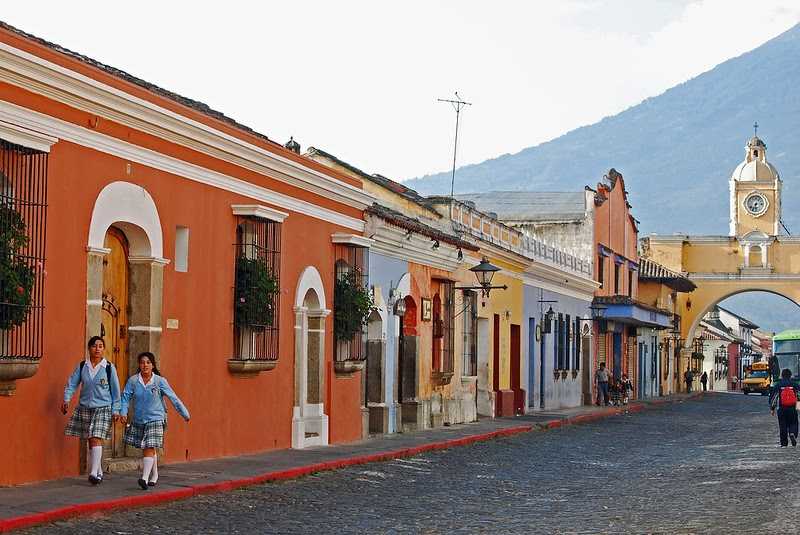
Like every other Latin American country, Guatemala has its fair share of unique idioms, which present a challenge to easy comprehension. But on the other hand, the accent you find here is one of the clearest and most “neutral” you can find in Latin America, making it one of the easiest places to learn Spanish abroad.
3. Mexico City, Mexico
Population: 22 million
If you’re a fan of big cities, Mexico City is for you! It is the second biggest city in Latin America (just behind São Paulo) and the fifth biggest in the world according to World Population Review.
Mexico City is one of the coolest cities in Latin America—it’s huge, charming, and full of fun things to do. Some of the most famous attractions are The Frida Kahlo museum, the Chapultepec Castle and the Basílica de la Virgen de Guadalupe.
You can taste real Mexican tacos and other delicious typical foods, and ride the metro around to get from place to place.
Read more:52 Authentic Mexican Foods That Have Influenced Global Cuisine
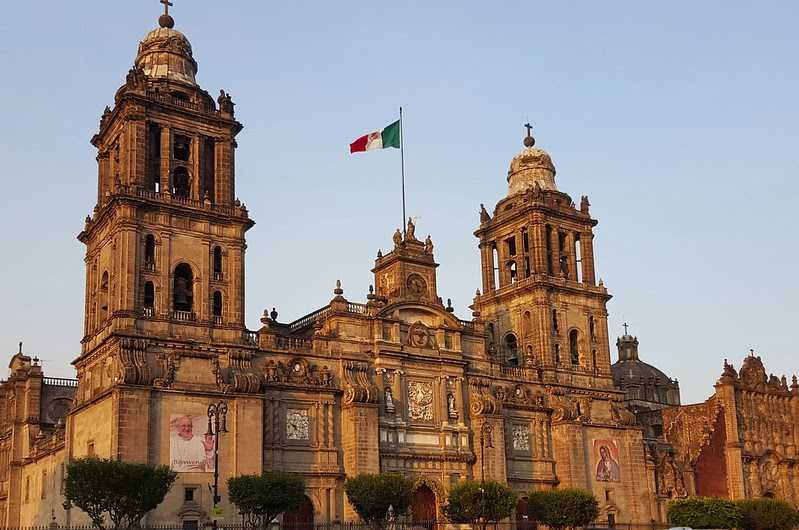
Some of the cons of Mexico City include the air pollution and rush-hour traffic, if you travel by car. But this is the price that Mexico pays for being one of the most well-developed cities in Latin America.
The accent in Mexico City, called the chilango accent, differs slightly from the Mexican accent in other states. While it’s clear and understandable, it has a characteristic “sing-songy” tone and plenty of unique slang. The best part of Mexico, and what makes it one of the best places to learn Spanish, is that you can expand your Spanish vocabulary by leaps and bounds with colorful Mexican expressions.
Watch: Words and Phrases Chilangos Say
4. San José, Costa Rica
Population: 1.4 million
Costa Rica is famous for its beautiful beaches and hiking trails. But not everything is ecotourism in this Central American country.
In San José, you can take a walk around the beautiful town, visit the National Stadium (Estadio Nacional), watch a lively soccer game, or explore Manuel Antonio National Park.
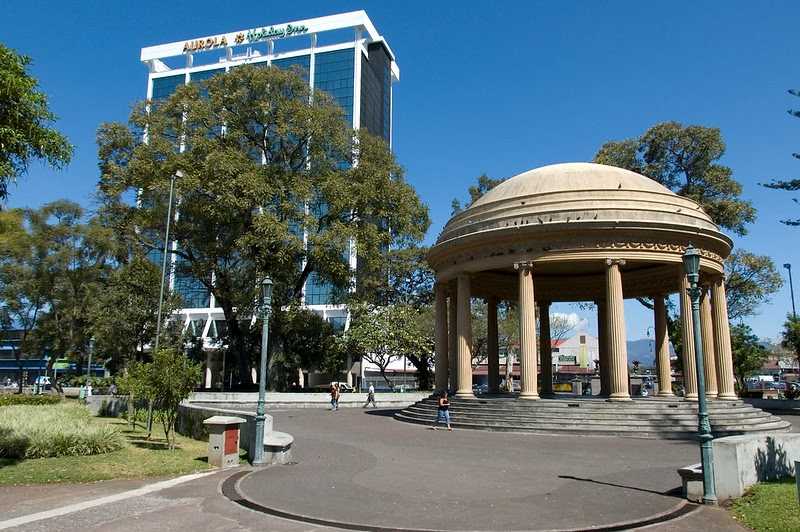
Keep in mind that Costa Rica is considered one of the most expensive places in Central America (according to Expert Vagabond), but with some creative forethought and planning you can enjoy your experience on a budget.
The accent in Costa Rica is a “neutral” accent in Latin America. You’ll hear the expression pura vida quite a lot, which can mean a lot of things. The unique thing about many Costa Ricans is that they struggle a little bit to roll the r in comparison to other Spanish speakers. All of this makes Costa Rica one of the best places to learn Spanish.
Read More: 20 Costa Rican Phrases for Everyday Use
5. Medellín, Colombia
Population: 2.6 million
Medellín is the second biggest city in Colombia, and full of restaurants, cafés, and clubs where you can learn how to dance salsa with Colombians (who are the best dancers in Latin America!).
If you like culture, the city offers famous museums to visit, like El museo de arte moderno and El museo de Antioquia. Ride el metrocable or visit local markets to get a taste of Colombian food such as la bandeja paisa.
What’s more, this “city of eternal spring” provides excellent weather all year round.
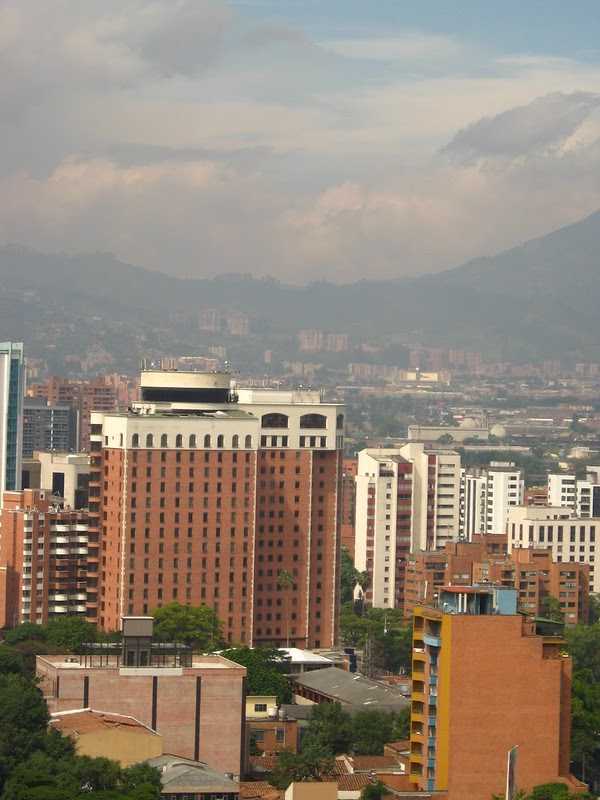
While this place is infamous for the international news about violence, the situation continues to improve over the years. A downside to consider is the rush-hour traffic, which gets heavy every day around 5 pm, according to Under30Experiences.
The Colombian accent is one of the most neutral in Latin America as Colombians speak clearly and slowly. If you’re interested in improving your listening skills, you’ll accomplish this goal easily by learning Spanish in Medellín. You’ll notice that Colombians pronounce y and the ll strongly, which sounds similar to the English “j” sound.
6. Cuzco, Perú
Population: 480,000
If you’re interested in ancient civilizations, Cuzco is ideal. It was once the capital city of the Incan empire, leaving remnants of their culture such as Koricancha or Sacsayhumán.
Explore some charming cafés—which are better at high altitude!—and make some traditional chocolate during your stay. The best part is that it’s only 60 miles (100 kilometers) from the legendary city of Machu Picchu.
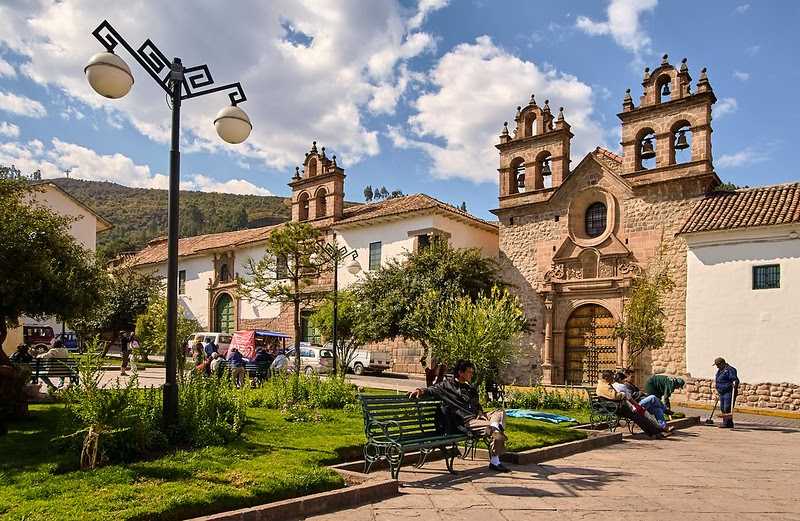
Another pro of living in Cusco is the small size of the city, allowing you to walk everywhere. There are buses, taxis, and Ubers if you prefer to ride instead.
Just like Antigua Guatemala, its downside is due to tourism and widely-spoken English, which could potentially impede your desire to learn Spanish in an immersive environment.
But on the positive side, Peruvian Spanish is clear and easy to understand. Check out how a Peruvian accent sounds.
7. Panajachel, Guatemala
Population: 11,000
Panajachel, or Pana, is another extremely charming little town in Guatemala, located 90 miles (150 kilometers) from Guatemala City. It’s along the shores of Lake Atitlán, surrounded by three volcanoes. It exhibits Mother Nature’s beauty at its finest!
Read more: Top 12 Must-Visit Towns of Lake Atitlán, Guatemala
Besides being beautiful, Pana is a well-priced place to stay for longer durations. It has plenty of hotels, hostels, and some Airbnbs to rent. What makes Pana one of the best places to learn Spanish, is that the town is small enough for you to walk everywhere and enjoy the quirky beauty of its many little alleyways.

Roaming the streets are colorful tuc-tucs (3-wheeled taxis), which take you from one place to another for a small fee. Just like Antigua (but with a different style), the town has an active nightlife and plenty of tourists. It’s also laid-back and relaxing.
The town offers several top-notch Spanish schools, but being the highly touristic place that it is, many local store clerks and vendors are quick to speak English to you.
8. Asunción, Paraguay
Population: 521,000
Asunción is the capital of Paraguay, a small country in South America that borders Argentina, Brazil, and Peru.
Asunción is a small but beautiful city. It’s also cheap to live in—in fact, you can rent an apartment starting at $250 a month, according to Expatra.com.
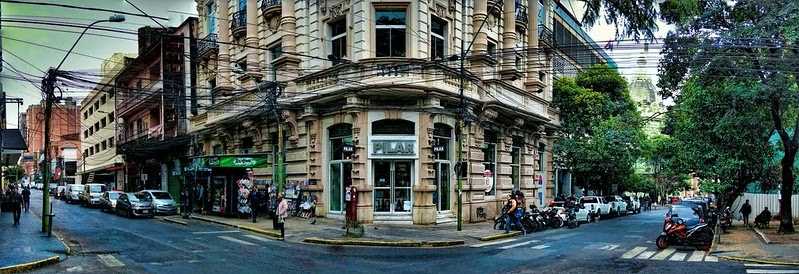
The city experience offers museums, botanical gardens, and restaurants serving delicious local foods. It’s also safe to live here, with low levels of crime.
Some cons of living in Asunción include the breezeless heat, which might be unbearable for some, and the unpaved roads leading out of the city, which forces traffic to move slowly.
Additionally, the Paraguayan Spanish accent is one of the toughest to understand, as locals fail to articulate their words clearly. The biggest hurdles to overcome in comprehension include the usage of vos instead of tú and the mixing of Spanish with Guaraní (the second official language in Paraguay).
If you’re more experienced in your Spanish progress, this place to learn Spanish is an exciting challenge to boost your fluency even more.
9. Montevideo, Uruguay
Population: 1.7 million
Montevideo is a hidden jewel in South America. Some people describe it as a “small Buenos Aires.” While there isn’t a historical or famous landmark in the city, it’s a beautiful place next to the beach, providing a walkable 12.5 mile-long (20 km-long) rambla, or coastline, to enjoy.
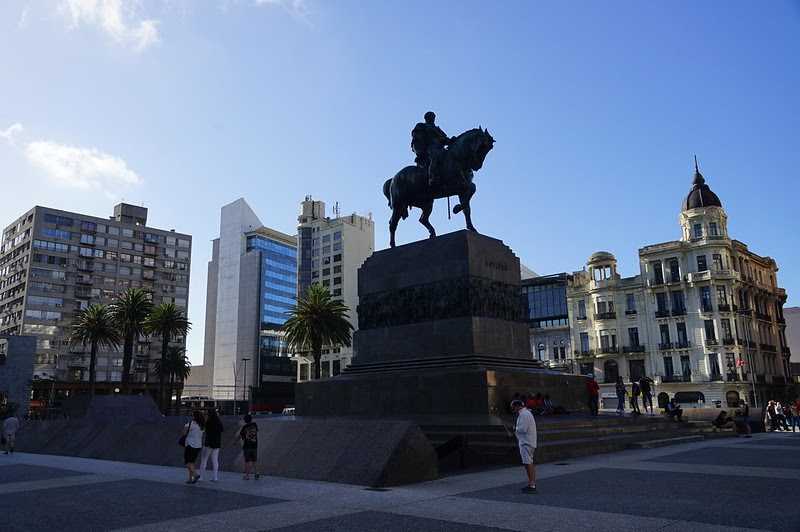
If you’re a steak lover, Uruguay provides some amazing choripanes and chorizo uruguayo. The weather is nice, too—summers are warm and winters are cool. You can walk around in a t-shirt or light jacket.
According to WhatDiplomatsDo, one of the cons of living in Montevideo is its lack of cleanliness, due to regular trash-collector strikes. Also, take note that dinner culture starts super late, around 10 PM.
Uruguayan Spanish is charming, but not neutral. Two things you’ll notice (similar to Argentinian Spanish) is the constant skipping over the letter “s”—only pronouncing it when the actual word starts with it.
Another peculiarity is the pronunciation of y and ll, which sounds like the English “sh.” Here’s how Uruguayans sound.
10. Baños De Agua Santa, Ecuador
Population: ~20,000
Baños De Agua Santa, or plainly Baños, is the “adventure capital” in Ecuador (the actual capital of Ecuador is Quito). Similar to other cities on this list, the weather is at a comfortable constant, not too hot or cold. This small town is walkable, and, according to International Living, easily affordable—costing around $1,500 a month to live here.
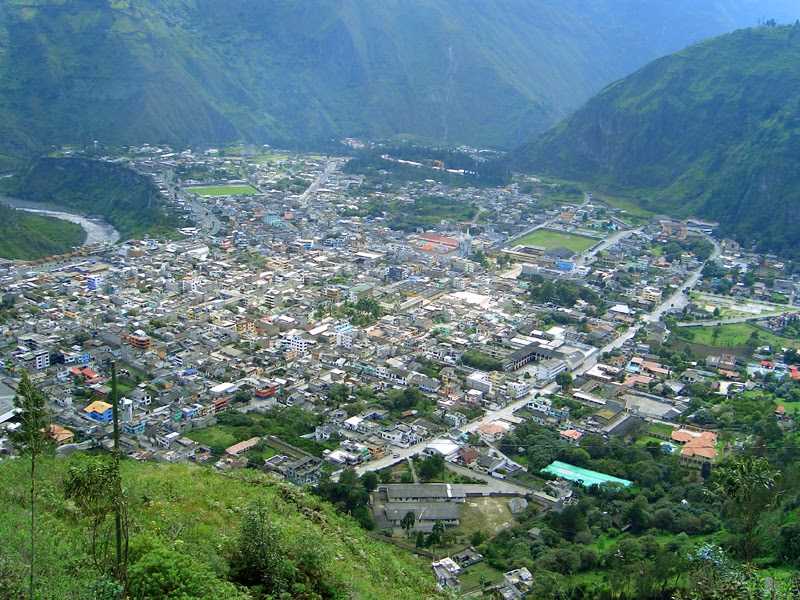
Adventures in Baños include the “End of the World Swing,” ziplining over wild tropical forests, and hiking the extraordinary trails woven throughout Llanganates National Park.
One con to consider is the extra tax you must pay on imported goods. If you buy something that’s not made in Ecuador, it can be twice as expensive as it is in the U.S., according to Itchy Feet on the Cheap. Another con is the problematic amount of stray dogs roaming the streets.
Ecuadorian Spanish is yet another great kind of Spanish to learn, since Ecuadorians enunciate well. Once you get introduced to some common informal speech and slang, such as the word ñaño (similar to the English “bro”), you’ll be on your way to Spanish fluency in no time.
11. Rosario, Argentina
Population: 1.5 million
Rosario is a beautiful city in Argentina, a country considered “the Europe of the Americas” for its immigrant populations from Italy and Spain. In light of this cultural influence, Argentina is similarly organized to Europe.

Argentinians prepare excellent meals based on Italian and Spanish cuisine. They’re great at making wine as well. Rosario is not as big as Buenos Aires, but provides free (or almost free) healthcare for everyone, including foreigners.
Some cons of living in Rosario (or in Argentina) are political instability and the rate of inflation. The Argentine peso is currently suffering devaluation due to high inflation.
12. La Paz, Bolivia
Population: 812,000
La Paz is a beautiful, old city in Bolivia, and the third biggest in the whole country. Living here is relatively cheap and there are plenty of things to do. You can ride the teleférico, visit the San Francisco Basílica, watch cholita wrestling matches, or shop at Bolivian markets.

One con of living in La Paz is that salaries are very low according to Teleport.org. Another one might be its altitude, as it’s the highest capital in the world—between 10,170 and 13,313 feet (3,100-4,058 m) above sea level.
While Bolivians also have a somewhat neutral accent, their Spanish is influenced by local indigenous expressions, but it’s still a great place to learn Spanish.
13. San Salvador, El Salvador
Population: 240,000
San Salvador is the capital of El Salvador and our last place on the list of great places to learn Spanish!
While living in San Salvador you’ll have countless interesting experiences. The country itself is small, so you’ll always be 2 hours away from stunning beaches to surf in. You’ll be able to try the best pupusas ever, and use USD as the national currency—which might make you feel a bit at home.
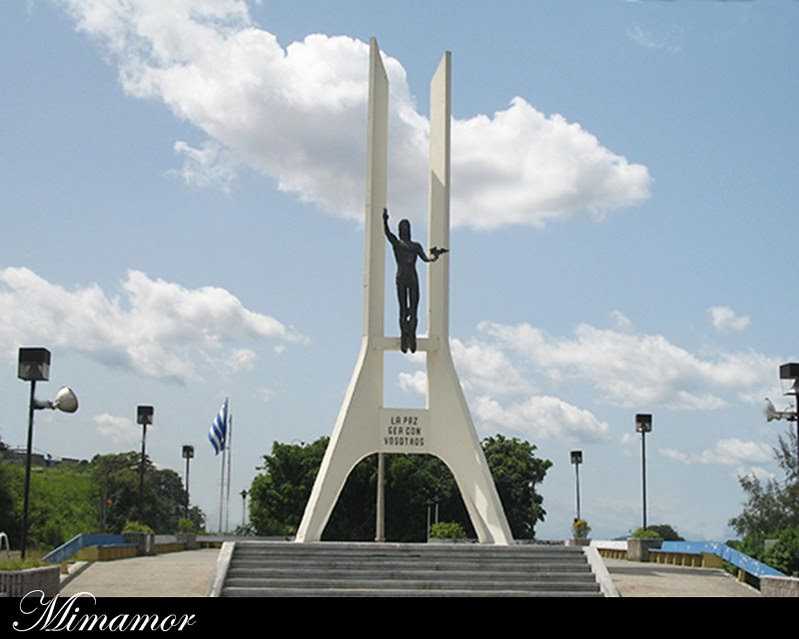
Some cons are the high temperature and violent crimes that do happen here. Luckily, their new government is acting to reduce this.
The Salvadoran accent is unique as well. Salvadorans and Guatemalans share some idiomatic expressions, but Salvadorians often skip pronouncing the letter “s” while Guatemalans don’t.
Learn Some Spanish Before Going Abroad!
If you’ve found a place to learn Spanish from the previous list, and you’re planning your next trip, I have fulfilled my task.
If you’re planning to go anywhere, it is convenient to learn some Spanish beforehand. Knowing some Spanish will help you to communicate with the locals and get ahead of yourself while you start getting acquainted and comfortable with the language.
Sign up for a free class with one of our friendly Guatemalan teachers. If you come to Guatemala, that’ll be of amazing help. If you end up choosing some other place, you’ll be able to compare the Guatemalan idioms and accent with those of other Latin American countries!

Want to learn more about Hispanic and Latin American culture? Check these out!
- French vs Spanish: 7 Reasons Spanish Could Be a Strong Long-Term Investment
- 7 Creative Ways to Maintain Spanish Fluency at Home — Perfect for Elementary Kids
- Raising a Bilingual Child: 10 Must-Have Resources Every Parent Needs
- 5 Proven Strategies to Help Your Middle Schooler Excel in 1-on-1 Online Spanish Classes
- 10 Expert Tips to Keep Your Middle Schooler Motivated in Online Language Lessons
- 5 Fun & Easy Spanish Activities to Do at Home with Your Preschooler
- The Best Spanish Learning Apps, Books, and Games for Kids
- The Best Spanish TV Shows, Movies, and Books for Kids to Learn Faster
- 9 Tips for Learning How to Learn Two or More Languages at Once - January 20, 2023
- The History and Tradition of Las Cabañuelas - December 26, 2022
- 10 Ways to Learn How to Think in Spanish - December 25, 2022




